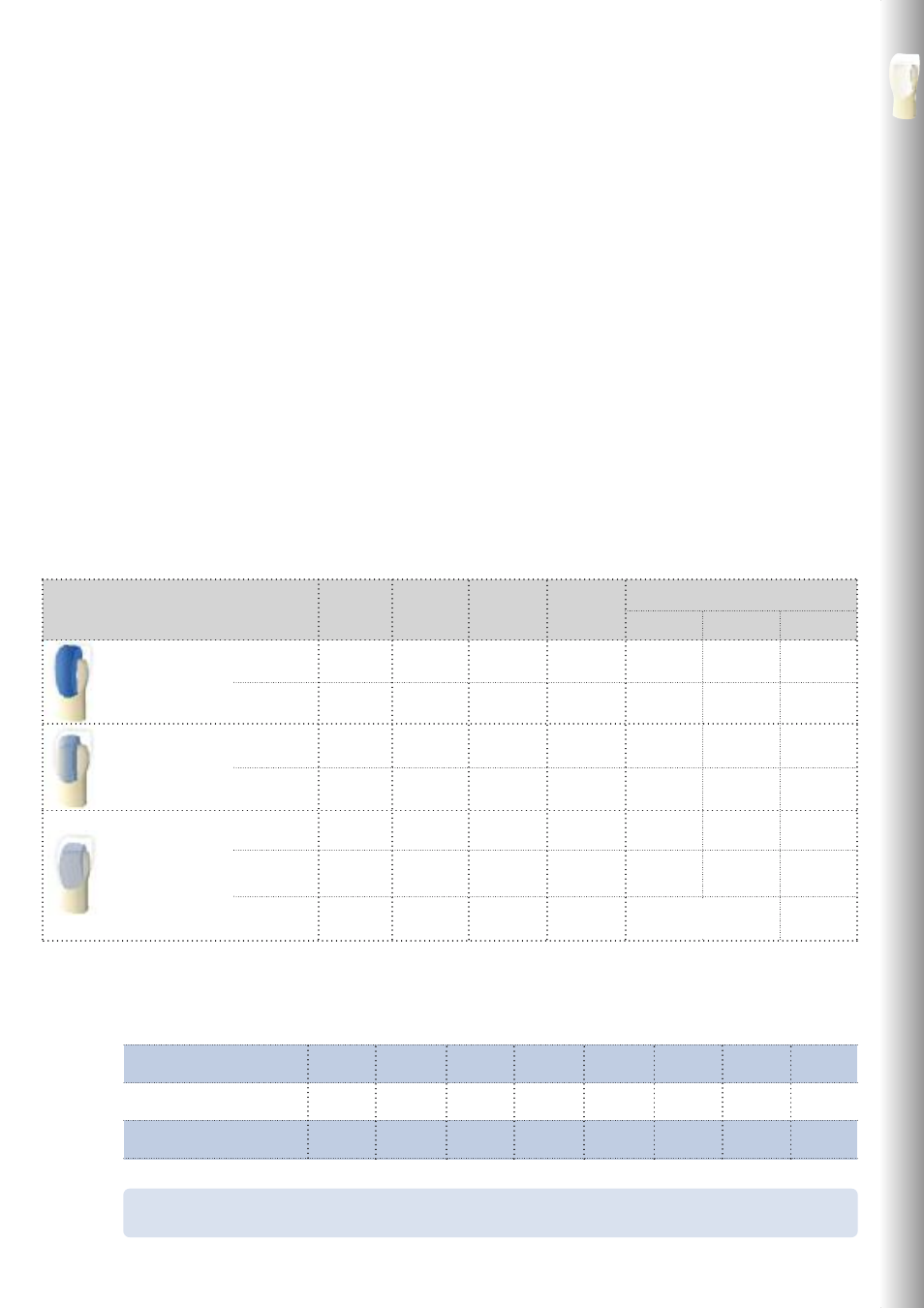Layer thicknesses – Ivoclar Vivadent IPS e.max CAD Labside User Manual
Page 15

15
Layer thicknesses
The restoration design is key to the success of durable all-ceramic restorations. The more attention is given to the design,
the better the final results and the clinical success will turn out to be. The following basic guidelines have to be observed:
– IPS e.max CAD is the high-strength component of your restoration and must, therefore, always make up at
least 50% of the total layer thickness of the restoration.
– In large preparations and for veneered or partially veneered restorations, the excess available space must be
compensated by the corresponding dimensions of the high-strength IPS e.max CAD component and not by
the IPS e.max Ceram layering material.
– The design of the restoration generated by the software has to be individually adjusted, if necessary, in accordance with
the clinical situation using the design tools.
– The areas that support and reinforce the shape and cusps of the restoration are constructed with the integrated design
tools of the different types of software used.
– In partially veneered restorations, the transition between the layering material and IPS e.max CAD must not be located
in the area of the functional contact points.
The following minimum thicknesses have to be observed to match the tooth shade of the shade guide and to
fulfil the requirements given from the preparation guidelines:
Veneer
Inlay
Onlay
Partial
crown
Anterior
Premolar
Molar
circular
incisal/occlusal
circular
labial/occlusal
circular
incisal/occlusal
design type
0.6
0.7
0.6
0.4
–
–
–
1.0
isthmus width
1.0
isthmus width
–
–
–
–
–
1.0
1.0
–
–
–
–
–
1.5
1.5
1.5
1.3
–
–
–
1.2
1.5
1.2
0.4
0.8
0.8
1.5
1.5
1.5
1.0
0.8
1.0
1.5
1.5
1.5
1.3
–
–
–
Minimum thickness
IPS e.max CAD
Staining technique
Minimum thickness
IPS e.max CAD
Cut-back technique
(after reduction)
Minimum thickness
IPS e.max CAD
Layering technique
Crowns
supporting the tooth shape
dimensions in mm
O
v
e
rv
ie
w
o
f
th
e
C
li
n
ic
a
l
W
o
rk
in
g
S
te
p
s,
F
a
b
ri
ca
ti
o
n
P
ro
ce
ss
Failure to observe the stipulated framework design criteria and minimum thicknesses may result in clinical failures, such as
cracks, delamination, and fracture of the restoration.
Total layer thickness of the
restoration in mm
Minimum layer thickness of the
framework ceramic mm
Maximum layer thickness of the
veneer with IPS e.max Ceram in mm
For the cut-back and layering techniques the relationship of the layer thickness between IPS e.max CAD (framework)
and IPS e.max Ceram (veneer) must also be observed:
0.8
0.4
0.4
1.0
0.5
0.5
1.2
0.6
0.6
1.5
0.8
0.7
1.8
1.0
0.8
2.0
1.1
0.9
2.5
1.3
1.2
3.0
1.6
1.4
